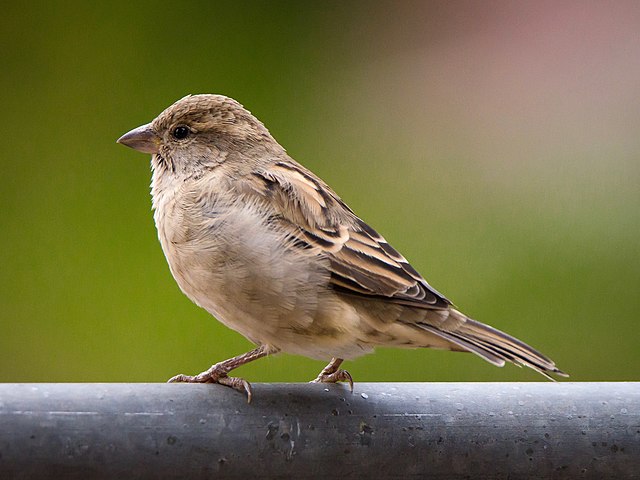MediaPipe 圖片分類器工作可讓您對圖片進行分類。您可以使用這項工作,找出圖片在訓練時定義的一系列類別中代表的內容。本操作說明將說明如何在 Android 應用程式中使用圖像分類器。您可以在 GitHub 上找到這些操作說明中所述的程式碼範例。
您可以查看網頁示範,瞭解這個工作實際運作情形。如要進一步瞭解這項工作的功能、模型和設定選項,請參閱總覽。
程式碼範例
MediaPipe Tasks 範例程式碼是 Android 圖片分類器應用程式的簡單實作。這個範例會使用實體 Android 裝置的相機,持續分類物體,也可以使用裝置相片庫中的圖片和影片,以靜態方式分類物體。
您可以使用這個應用程式做為自有 Android 應用程式的起點,或是在修改現有應用程式時參考。圖像分類器範例程式碼託管於 GitHub。
下載程式碼
以下操作說明說明如何使用 git 指令列工具,建立範例程式碼的本機副本。
下載程式碼範例:
- 使用下列指令複製 Git 存放區:
git clone https://github.com/google-ai-edge/mediapipe-samples
- 您可以選擇將 Git 例項設定為使用稀疏檢查,這樣您就只會取得 Image Classifier 範例應用程式的檔案:
cd mediapipe-samples git sparse-checkout init --cone git sparse-checkout set examples/image_classification/android
建立本機版本的範例程式碼後,您可以將專案匯入 Android Studio 並執行應用程式。如需操作說明,請參閱 Android 設定指南。
重要元件
以下檔案包含此圖像分類範例應用程式的重要程式碼:
- ImageClassifierHelper.kt:初始化圖片分類器,並處理模型和委派函式選項。
- MainActivity.kt:實作應用程式,包括呼叫
ImageClassificationHelper和ClassificationResultsAdapter。 - ClassificationResultsAdapter.kt - 處理及格式化結果。
設定
本節將說明設定開發環境和程式碼專案以使用圖像分類器的關鍵步驟。如要進一步瞭解如何設定開發環境以使用 MediaPipe 工作,包括平台版本需求,請參閱 Android 設定指南。
依附元件
圖片分類器使用 com.google.mediapipe:tasks-vision 程式庫。將這個依附元件新增至 Android 應用程式開發專案的 build.gradle 檔案。使用以下程式碼匯入必要的依附元件:
dependencies {
...
implementation 'com.google.mediapipe:tasks-vision:latest.release'
}
型號
MediaPipe 圖片分類器工作需要訓練的模型,且該模型必須與此工作相容。如要進一步瞭解可用的圖片分類器訓練模型,請參閱任務總覽的「模型」一節。
選取並下載模型,然後將模型儲存在專案目錄中:
<dev-project-root>/src/main/assets
請使用 BaseOptions.Builder.setModelAssetPath() 方法指定模型使用的路徑。這個方法會在下一節的程式碼範例中提及。
在圖片分類器程式碼範例中,模型是在 ImageClassifierHelper.kt 檔案中定義。
建立工作
您可以使用 createFromOptions 函式建立工作。createFromOptions 函式可接受設定選項,包括執行模式、顯示名稱語言代碼、結果數量上限、信心閾值,以及類別許可清單或拒絕清單。如要進一步瞭解設定選項,請參閱「設定總覽」。
圖片分類器工作支援 3 種輸入資料類型:靜態圖片、影片檔案和即時影片串流。建立工作時,您需要指定與輸入資料類型相對應的執行模式。請選擇對應於輸入資料類型的分頁,瞭解如何建立工作並執行推論。
圖片
ImageClassifierOptions options =
ImageClassifierOptions.builder()
.setBaseOptions(
BaseOptions.builder().setModelAssetPath("model.tflite").build())
.setRunningMode(RunningMode.IMAGE)
.setMaxResults(5)
.build();
imageClassifier = ImageClassifier.createFromOptions(context, options);
影片
ImageClassifierOptions options =
ImageClassifierOptions.builder()
.setBaseOptions(
BaseOptions.builder().setModelAssetPath("model.tflite").build())
.setRunningMode(RunningMode.VIDEO)
.setMaxResults(5)
.build();
imageClassifier = ImageClassifier.createFromOptions(context, options);
直播
ImageClassifierOptions options = ImageClassifierOptions.builder() .setBaseOptions( BaseOptions.builder().setModelAssetPath("model.tflite").build()) .setRunningMode(RunningMode.LIVE_STREAM) .setMaxResults(5) .setResultListener((result, inputImage) -> { // Process the classification result here. }) .setErrorListener((result, inputImage) -> { // Process the classification errors here. }) .build() imageClassifier = ImageClassifier.createFromOptions(context, options)
圖像分類器範例程式碼實作可讓使用者切換處理模式。這個方法會使建立工作程式的程式碼變得更複雜,可能不適合您的用途。您可以在 ImageClassifierHelper.kt 檔案的 setupImageClassifier() 函式中看到這段程式碼。
設定選項
此工作提供下列 Android 應用程式設定選項:
| 選項名稱 | 說明 | 值範圍 | 預設值 |
|---|---|---|---|
runningMode |
設定工作執行模式。共有三種模式: IMAGE:單一圖片輸入模式。 VIDEO:影片解碼影格模式。 LIVE_STREAM:輸入資料 (例如來自攝影機的資料) 的直播模式。在這個模式中,必須呼叫 resultListener,才能設定事件監聽器,以非同步方式接收結果。 |
{IMAGE, VIDEO, LIVE_STREAM} |
IMAGE |
displayNamesLocale |
設定標籤語言,用於工作模型中繼資料中提供的顯示名稱 (如有)。預設值為英文的 en。您可以使用 TensorFlow Lite Metadata Writer API,在自訂模型的中繼資料中新增本地化標籤 |
語言代碼 | en |
maxResults |
設定要傳回的最高分數分類結果選用數量上限。如果小於 0,則會傳回所有可用的結果。 | 任何正數 | -1 |
scoreThreshold |
設定預測分數門檻,覆寫模型中繼資料中提供的門檻 (如果有)。低於這個值的結果會遭到拒絕。 | 任何浮點 | 未設定 |
categoryAllowlist |
設定允許的選項類別名稱清單。如果不為空白,系統會篩除類別名稱不在這個集合中的分類結果。系統會忽略重複或不明的類別名稱。這個選項與 categoryDenylist 互斥,如果同時使用這兩個選項,系統會傳回錯誤。 |
任何字串 | 未設定 |
categoryDenylist |
設定選用的不允許類別名稱清單。如果不為空白,則系統會篩除類別名稱位於此組合的分類結果。系統會忽略重複或不明的類別名稱。這個選項與 categoryAllowlist 互斥,如果同時使用這兩個選項,會導致錯誤。 |
任何字串 | 未設定 |
resultListener |
在 Image Classifier 處於即時串流模式時,將結果事件監聽器設為以非同步方式接收分類結果。只有在執行模式設為 LIVE_STREAM 時,才能使用 |
不適用 | 未設定 |
errorListener |
設定選用的錯誤監聽器。 | 不適用 | 未設定 |
準備資料
圖像分類器可處理圖片、影片檔案和直播影片。這個工作會處理資料輸入預先處理作業,包括調整大小、旋轉和值規格化。
您必須先將輸入圖片或影格轉換為 com.google.mediapipe.framework.image.MPImage 物件,再傳送至圖片分類器。
圖片
import com.google.mediapipe.framework.image.BitmapImageBuilder; import com.google.mediapipe.framework.image.MPImage; // Load an image on the user’s device as a Bitmap object using BitmapFactory. // Convert an Android’s Bitmap object to a MediaPipe’s Image object. Image mpImage = new BitmapImageBuilder(bitmap).build();
影片
import com.google.mediapipe.framework.image.BitmapImageBuilder; import com.google.mediapipe.framework.image.MPImage; // Load a video file on the user's device using MediaMetadataRetriever // From the video’s metadata, load the METADATA_KEY_DURATION and // METADATA_KEY_VIDEO_FRAME_COUNT value. You’ll need them // to calculate the timestamp of each frame later. // Loop through the video and load each frame as a Bitmap object. // Convert the Android’s Bitmap object to a MediaPipe’s Image object. Image mpImage = new BitmapImageBuilder(frame).build();
直播
import com.google.mediapipe.framework.image.MediaImageBuilder; import com.google.mediapipe.framework.image.MPImage; // Create a CameraX’s ImageAnalysis to continuously receive frames // from the device’s camera. Configure it to output frames in RGBA_8888 // format to match with what is required by the model. // For each Android’s ImageProxy object received from the ImageAnalysis, // extract the encapsulated Android’s Image object and convert it to // a MediaPipe’s Image object. android.media.Image mediaImage = imageProxy.getImage() Image mpImage = new MediaImageBuilder(mediaImage).build();
在圖片分類器範例程式碼中,資料準備作業會在 ImageClassifierHelper.kt 檔案中處理。
執行工作
您可以呼叫對應於執行模式的 classify 函式,觸發推論。Image Classifier API 會傳回輸入圖片或影格中物件的可能類別。
圖片
ImageClassifierResult classifierResult = imageClassifier.classify(image);
影片
// Calculate the timestamp in milliseconds of the current frame. long frame_timestamp_ms = 1000 * video_duration * frame_index / frame_count; // Run inference on the frame. ImageClassifierResult classifierResult = imageClassifier.classifyForVideo(image, frameTimestampMs);
直播
// Run inference on the frame. The classifications results will be available // via the `resultListener` provided in the `ImageClassifierOptions` when // the image classifier was created. imageClassifier.classifyAsync(image, frameTimestampMs);
注意事項:
- 在影片模式或直播模式下執行時,您也必須向圖片分類器工作提供輸入影格時間戳記。
- 在圖片或影片模式下執行時,圖像分類器工作會阻斷目前執行緒,直到處理完輸入圖片或影格為止。為避免阻斷使用者介面,請在背景執行緒中執行處理作業。
- 在直播模式下執行時,圖像分類器工作不會阻斷目前的執行緒,而是立即傳回。每次處理完輸入影格後,它都會使用偵測結果叫用結果監聽器。如果在圖像分類器工作忙於處理另一個影格時呼叫
classifyAsync函式,工作會忽略新的輸入影格。
在圖片分類器範例程式碼中,classify 函式是在 ImageClassifierHelper.kt 檔案中定義。
處理及顯示結果
執行推論後,圖片分類器工作會傳回 ImageClassifierResult 物件,其中包含輸入圖片或影格內物件的可能類別清單。
以下是這項工作的輸出資料範例:
ImageClassifierResult:
Classifications #0 (single classification head):
head index: 0
category #0:
category name: "/m/01bwb9"
display name: "Passer domesticus"
score: 0.91406
index: 671
category #1:
category name: "/m/01bwbt"
display name: "Passer montanus"
score: 0.00391
index: 670
這項結果是透過以下方式取得:在以下裝置上執行鳥類分類器:

在圖像分類器範例程式碼中,ClassificationResultsAdapter.kt 檔案中的 ClassificationResultsAdapter 類別會處理結果:
fun updateResults(imageClassifierResult: ImageClassifierResult? = null) {
categories = MutableList(adapterSize) { null }
if (imageClassifierResult != null) {
val sortedCategories = imageClassifierResult.classificationResult()
.classifications()[0].categories().sortedBy { it.index() }
val min = kotlin.math.min(sortedCategories.size, categories.size)
for (i in 0 until min) {
categories[i] = sortedCategories[i]
}
}
}

